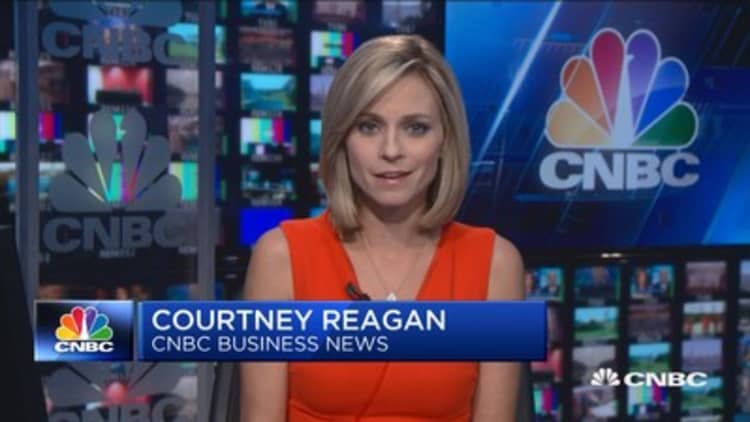
Investors this week won't have to deal with the former FBI director calling the president a liar or a landmark election in the UK that was almost destined to defy expectations.
For that, we can be thankful. However, it will be no picnic dealing with another interest rate hike or important economic news or generally facing a market that has to go down sometime. Doesn't it?
The main event
The big enchilada for the week is going to happen Tuesday and Wednesday when the Federal Reserve, the U.S. central bank that decides where interest rates are heading, meets in Washington.
Unless something completely off the wall happens in the next couple of days, the Fed is going to approve another quarter-point hike. That's important for a lot of reasons.
First, the Fed's benchmark rate determines what happens with virtually all variable-rate credit products. So if you've got an adjustable-rate mortgage, a home equity line of credit or credit cards in general, expect to pay a few dollars more. The prime rate generally gets reset almost immediately after the Fed's decision comes down, so you'll feel the impact soon.
Second, while the market feels like it knows what the Fed will do, it's almost as important learning why they did it. So investors will want to peruse the post-meeting statement closely for clues about what's ahead. With the economy wobbling of late and the market steaming, a lot is riding on what happens.
Third, we'll get another look at where the Fed sees growth heading and where rates will be over the longer term, through the summary of economic projections. This is always an attention-getter for the market.
And another thing ...
Here's just a little tidbit to look for during all that post-Fed hand-wringing naval-gazing analysis: Watch for the expression "dovish hike." It's a term that Fed geeks apply when the central bank raises rates but issues caution about the economic landscape and indicates a slow pace ahead for further increases.
March's rate hike came with some highly tepid views of where the economy is heading, and this week's meeting is likely to have more of the same. Those two little words are likely to be not far from the lips of the Fed punditry.
Data detail
On balance, the economic news lately has been not great. When looking at the various reports compared to expectations, the economy is running at its weakest level since February 2016. We'll get a chance this week to turn that around with a big pile of numbers to peruse.
Here's what the U.S. data slate is looking like:
- Monday: New York Fed survey of consumer expectations; U.S. budget deficit.
- Tuesday: Producer Price Index.
- Wednesday: Along with release of the Fed statement, mortgage applications, consumer price index, retail sales, business inventories.
- Thursday: Jobless claims, the New York and Philadelphia Fed surveys, import prices, industrial production, National Association of Home Builders housing market index.
- Friday: Housing starts, building permits, the University of Michigan consumer sentiment index. The sentiment gauge is huge and often moves markets.
A final word, summer slowdown version
The market had a rough go of it last week, but all things considered it could have been worse.
Former FBI Director James Comey's testimony before Congress had a capacity to throw the White House into turmoil and hammer the market, but it didn't. UK voters' rebuke of Prime Minister Theresa May also could have crushed stocks, but it didn't.
Investors instead are focusing on fundamentals, and so far like what they've seen. However, if corporate earnings don't keep pace, or the economy keeps lagging, or tech stocks get bubbly, that could start making the market look even more expensive. And if anything is keeping market pros up at night, it's that question of valuation.
David Bianco, chief investment strategist for the Americas at Deutsche Bank, has this week's words of wisdom about where stocks are heading. He is recommending investors scale back their stock exposure heading into the summer, with a sector preference for health care and large pharma and biotech companies:
The S&P often achieves a high in spring, but in summer it often consolidates as investors re-examine their views and valuations and prepare for their desired positioning into year-end. September-October is usually a make or break time for the market. If the risk-reward appears attractive into year-end markets usually rally from a summer or early autumn dip into year-end...
Fundamentally, we still see healthy returns from the S&P 500 over the next several years, thus this near term pullback should offer a good entry point, so we're patient and selective for now.


